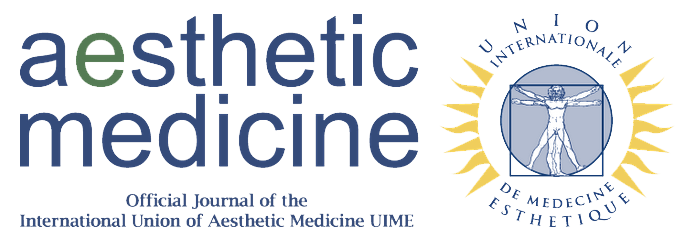Subdermal Induced Heat (S.I.H.) technology for malar bags treatment. Preliminary clinical evaluation
Keywords:
Subdermal Radiofrequency, Malar Bags, EfficacyAbstract
The purpose of this study is to present our experience in the treatment of laxity of the malar region using Subdermal induced heat (S.I.H.) technology, a new technology that uses cannulae to bring under the skin monopolar radiofrequency (RF) to treat malar defect in a minimally invasive, non-surgical way and produce an aesthetic improvement.
METHODS
Ten patients with edema, malar bags and malar festoons had two treatment sessions with S.I.H. technology using a 5 cm cannula at a temperature between 45 and 50 degrees. The overall duration of bilateral treatment was 360 seconds and the time required for each session was no longer than 20 minutes. No postoperative care was required.
RESULTS
All the patients in the study showed an aesthetic improvement in the malar region, in relation to the severity of the blemish, through collagen contraction and the production of neo-collagen by fibroblastic stimulation. All patients were able to immediately return to their normal routine. Although the results were gradual, patient satisfaction was remarkable. There were no complications during the study.
CONCLUSION
This new therapeutic proposal that uses S.I.H. technology allows a safe, non-invasive aesthetic improvement in these patients with excessive skin laxity of the malar region.
Downloads
Published
Issue
Section
License
Copyright (c) 2023 Benedetta Fanelli, Giorgio Maullu, Nicolò Scuderi

This work is licensed under a Creative Commons Attribution-NonCommercial 4.0 International License.
This is an Open Access article distributed under the terms of the Creative Commons Attribution License (https://creativecommons.org/licenses/by-nc/4.0) which permits unrestricted use, distribution, and reproduction in any medium, provided the original work is properly cited.
Transfer of Copyright and Permission to Reproduce Parts of Published Papers.
Authors retain the copyright for their published work. No formal permission will be required to reproduce parts (tables or illustrations) of published papers, provided the source is quoted appropriately and reproduction has no commercial intent. Reproductions with commercial intent will require written permission and payment of royalties.

This work is licensed under a Creative Commons Attribution-NonCommercial 4.0 International License.





